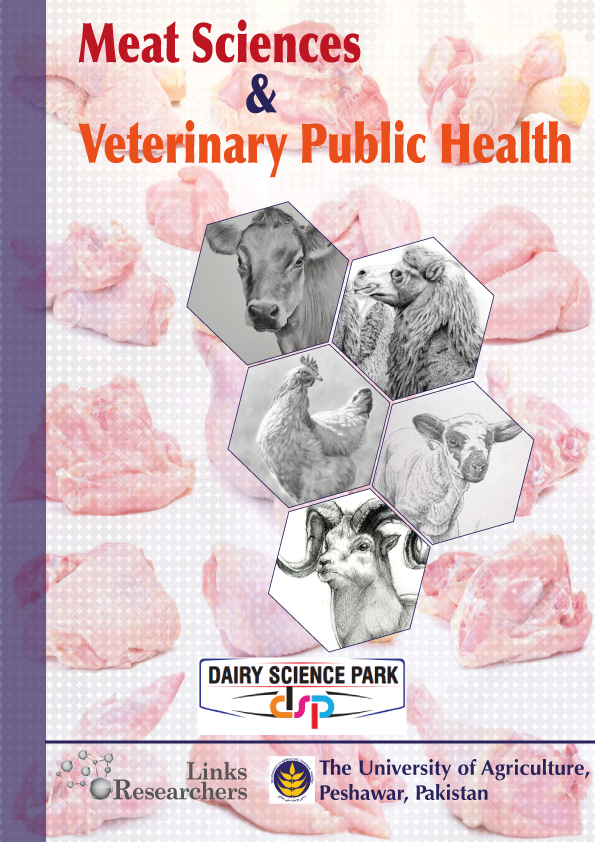Ali Zurwan1,*, Muhammad Moaeen-ud-Din2, Ghulam Bilal2, Zia-ur-Rehman1,2 and Muhammad Sajjad Khan1
Muhammad Sohail1, Muhammad Nauman-ul-Islam1, Hayazuddin2*, Imtiaz Ali Shah1, Abdur Raziq1, Subhan Ullah3 and Arsalan Ali Shah1
Muhammad Luqman1,3, Raheel Saqib2*, Xu Shiwei3 and Yu Wen3
Waqar Akhtar*, Muhammad Sharif**, Abdul Hayee Qureshi*, Khalid Mahmood Aujla*** and Muhammad Azeem Khan*
Malik Muhammad Yousaf1*, Mumtaz Hussain1, Muhammad Jahangir Shah1, Bashir Ahmed1, Muhammad Zeshan1,2, Muhammad Mohsin Raza1 and Kazim Ali2
Usman Ali Naeem*, Hashim Nisar*, Habib-ur-Rehman** and Naeem Ejaz*
Joseph Anejo-Okopi1*, Dorcas Yilger Gotom1, Noble Allison Chiehiura1, Julius Ocheme Okojokwu1, David Ochola Amanyi2, John Otumala Egbere1, Joshua Adetunji1, Otobo Innocent Ujah3 and Onyemocho Audu4
Frederic Ndihokubwayo and Atakan Koç
Mohamed Attia Ahmed Awad1*, Obaida Abdel Kareem Almasri2, Mohamed Abd El-Aziz Mohamed Ibrahim1, Rabie Ragab Sadek1, Samy Abou-Bakr1
Muhammad Zahid Iqbal1, Aneela Zameer Durrani1, Jawaria Ali Khan1, Nisar Ahmad2, Muhammad Usman1,*, Abdul Jabbar1, Saba Usman3, Ahsan Anjum3, Muhammad Husnain1, Nadeem Raza1 and Anwar-ul-Haq4
Ibrahim Samir Abd El-Hamid1*, Wafaa Adel Abd Fouda1, Hesham Attia Shedeed1, Safaa Ali Mostafa1, Ahmed Mohamed Elbaz2, Salah Abo Bakr2, Baliegh Hamdy Mosa1, Ali Saber Morsy1, Amal Mohamed Hasan1, Khamis Refaay Emam3
Madiha Khalil1, Amjad Farooq1, Asim Faraz2*, Abdul Waheed2, Nasir Ali Tauqir3, Riaz Hussain Mirza2 and Hafiz Muhammad Ishaq2
Adefunke Fadilat O. Ayinde1*, Peter Allison Johnston2, Olanrewaju Olusoji Olujimi3, Purnamita Dasgupta4 and Dare Akerele5
Noha M. Abd El-Azeem*, Hemat A. Abdel Magied, Mervat N. Ghazal, Nehad A. Ramadan, Enayat H. Abo El-Azayem, Y. S. Hussein, Heba H. Habib
Iqra Qazi1, Sohail Raza1*, Masood Rabbani1 and Muhammad Avais2
Aqsa Batool1, Masood Rabbani1*, Farhat Nazir Awan2, Sohail Raza1, Sehrish Firyal3 and Shahan Azeem1
Alsaied Alnaimy Habeeb*, Amaal M. Kamal, Mostafa Abbas A. Atta, Ahmed K. Sharaf
Enas K. Abo El-Maged, Azza H. El-Salakwy, Safia A. El-Gamal and Gehn Allam
Wael Halawa1, Raed M. Al-Atiyat2*, Jamal Abo Omar1, Faisal S. Rashaydeh3, Fath Ullah4, Shakirullah5 and Berkant Ismail Yildiz6
Elie Brigitte Mawussi1*, Arnaud Koffi Assah2, Essozimna Abalo Kulo1
Thuong Thi Nguyen1*, Nhu Quynh Ho1, Thuan Khanh Nguyen2, Tuan Phong Vu Anh Vo3, Hai Thanh Duong4











